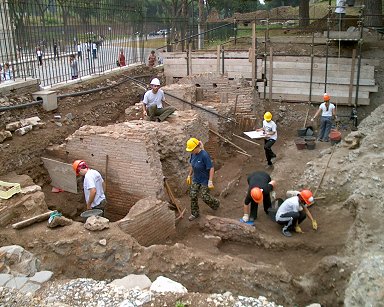It appears that the housing market has made a turn around since 2007, with homes being sold and purchased faster each year according USA Today.

While this is positive for sellers, home buyers are now dealing with a tight supply in homes for sale. This creates pressure on inventory as the markets head into the spring season known to be busy for selling homes. According to Housingwire.com, fewer inventories have current homeowners hesitant to put their home on the market because of concerns of not being able to find a suitable home in the future.
Homes for sale have sat on the market for approximately 98 days in February 2013 unlike February of 2011 where homes were on markets for approximately 123 days. In some areas, such as Oakland, homes were on the market for a mere 14 days.
According to the Homes.com Local Market Index, which measures the performance of price regarding repeat sale properties for the Top 100 Core Based Statistical Areas (CBSAs) in the United States, 47 of the top markets involving single family properties have increased on a monthly basis. Ninety of the top 100 markets have increased in price annually (for home pricing data ending in October 2012). This data supports Forbes’ claim that lower inventory drives up prices.
According to the New York Stock Exchange, financial markets have risen at a steady rate this year; this has increased consumer confidence and their willingness to spend more money as it has improved wealth and household balance sheets. However, even with increased confidence to spend money, older homes are simply not desired anymore and most home buyers are looking for homes built in the last decade. Thirty-three percent of current homeowners would prefer a newer, more expensive, home. And new home buyers, who are just now hitting the market, prefer newer homes as well. This creates pressure on home inventories as many homes on the market, older homes, may not meet the desired criteria.
With home buyers willing to spend more money on their new home, the inventory of newer homes for sale have not been able to keep up with the demand.
Home sales have increased by 13% since December of 2011 and are up by 9% in 2012 as a whole; making the growth in 2012 the highest annual total since 2007. As home sales grew, the prices of homes have also risen due to the low supply. This slow pace of inventory is not only due to builders building fewer homes; lower mortgages, due to higher restrictions, have helped influence the lack of inventory as well. Since the 2010 “robo-scandal,” banks and other companies have had to follow strict guidelines set by the government; therefore, short sales and loan modifications are being approved quicker, which has affected the foreclosure rate. And according to Housingwire.com, foreclosures alone accounted for 30% to 50% of the homes that were on sale but foreclosure inventory has dropped by 50% in some areas of the nation and up to 73% in others.
Sellers have an upper hand in this intense market. Many sellers are holding off with listing their home on the market for hopes in that they can increase the price of their home in the near future, but, selling your home now will bring competing offers; home buyers tend to drive up the price of the home themselves as they compete for your home. Currently, properties with flaws are finding numerous buyers as well, but low inventories do not last, therefore it is smart to sell in this market before sellers lose their control to buyers.
While inventories are low, home buyers need to change their behavior when searching for a home. Sacrifices need to be made, whether it is location, size, or the age of the home. It is common for cities to have emerging neighborhoods and smart buyers should keep a look out for as these neighborhoods as they may not be fully developed and therefore lower in price. With prices increasing, again due to the demand, if you do not purchase a home now, it’s possible that homes will be more expensive in the immediate future. The difference in price of a home today versus the same home 12 months from now can be applied to an older home for renovations. As a buyer it is crucial to be prepared for the current intense market as sellers have control (for now).
When buying and selling, please remember that market does not last forever. Our current market, with lots of competition due to low inventory, is typically seen during the spring season. Prices of homes are expected to increase for the next year therefore, sellers will continue having an upper hand. But who knows, the change in season could bring about more change in the real estate market.
Hi! I’m Maria, the Marketing Coordinator for Homes.com. I am part of a dream team that is dedicated to running this awesome blog along with Homes.com’s social channels. If I am not busy writing blogs and socially sharing for Homes.com, you can find me painting, drinking tea with my friends, and doing DIY projects!

















